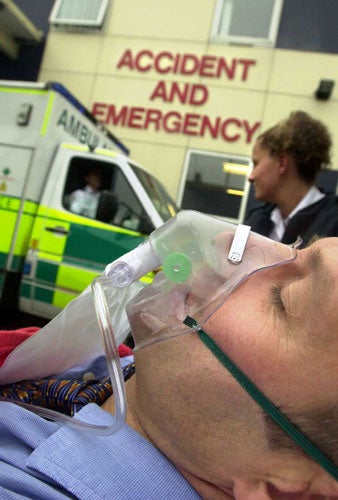Damning verdict on health trusts' out-of-hours emergency care

Almost one in five health trusts are delivering poor quality care outside normal office hours, the most comprehensive investigation into urgent and emergency services has concluded.
The Healthcare Commission also found that proportion of out-of-hours calls categorised as "urgent" varied from under 4 per cent to more than 32 per cent between services, "raising questions" over consistency. Among the other findings were:
*Only 44 per cent of out-of-hours GP services had arrangements in place to divert calls made when they were closed.
*77 per cent of ambulance responses to life-threatening calls had vehicles on the scene within eight minutes, but that varied from 61 per cent to 94 per cent.
*The proportion of children with a fractured limb who attended A&E and got pain relief within one hour varied from 20 per cent to 100 per cent.
*There were "significant variations" in the proportion of patients seen by a doctor or nurse within an hour of arriving at A&E and urgent care centres, from 40 per cent to 100 per cent.
Anna Walker, chief executive of the commission, said persistent concerns had been raised about ambulances being "stacked" outside A&E departments, like incoming aircraft at a busy airport, to ensure hospital staff did not breach the four-hour waiting target. To address that, the commission called for a new, single target covering the journey from the time a patient made contact with emergency services to the time they received treatment. Ms Walker said: "Having so improved performance in ambulances and A&E departments, we now need to improve the whole performance. What matters to patients is how long it takes from the time they make the telephone call to the point they are treated. We have measured the time taken by the ambulance and the time waiting in A&E. The measurement needs to be of the whole of the patient pathway, from the point of making the call to getting treatment." The investigation found almost one in five (18 per cent) primary care trust (PCT) areas were delivering a poor quality of service. People in the worst-performing areas had weaker GP out-of-hours services, waited longer for care and were less likely to have their needs met if they suffered from a chronic condition.
Ms Walker said difficulties in getting access to GPs was driving up demand on A&E departments, where visits have risen almost 16 per cent during the past four years, from 16.5 million in 2003-04 to 19.1 million in 2007-08.
"In some cases, patients can't get an appointment within 48 hours, in others they can't book appointments in advance or they are frustrated because they cannot get to their GP during working hours. These frustrations build up and people are walking into A&E and urgent care centres," she said.
The Department of Health said it would work with the commission and PCTs to address "gaps in the system". Sir George Alberti, the Government's emergency care director, said: "We are not complacent and we recognise the importance of encouraging continuous improvement in local services."
Healthy Service? Best and worst
Best performing trust areas:
Plymouth
Devon
Middlesbrough
North Tees
Northumberland
Worst performing trust area:
Bolton
South-west Essex
Newham
Harrow
Lewisham
Subscribe to Independent Premium to bookmark this article
Want to bookmark your favourite articles and stories to read or reference later? Start your Independent Premium subscription today.

Join our commenting forum
Join thought-provoking conversations, follow other Independent readers and see their replies